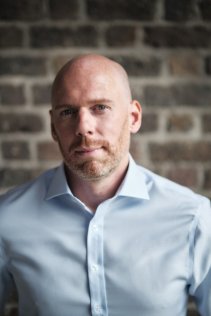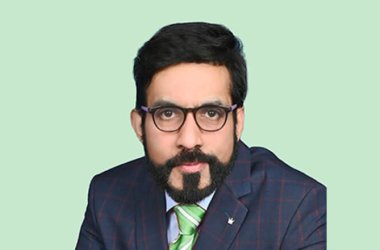CNME Editor Mark Forker spoke to John Woods, CTO at Algorand, to find out how the blockchain company has gained the edge over its market competition by offering a chain that he believes is ‘fit for purpose’. 
John Woods is one of the most respected thought leaders within the crypto community globally.
A couple of months ago, Woods decided to leave one of the biggest players in the cryptocurrency industry Cardano, to take up the position of CTO at the Algorand Foundation.
Some of his industry peers may have been surprised by that decision, but Woods says the sheer quality of Algorand’s technology made the offer impossible to ignore.
In a candid interview with CNME, he explains that he is driven by a desire to deliver first-class customer experiences, wants to increase the accessibility of Algorand to everybody – and explained how their VRF primitive is the only market player capable of solving the ‘trilemma’.
We kickstarted the conversation by talking about the experience economy that we now live in, and how Woods is determined to deliver great customer experience to Algorand users.
“There’s nothing that I love more than a great customer experience. I’m very focused on pursuing great customer experiences, both in my personal life, and providing it in my professional one. In addition to customer experience, it’s all about the product. When I look at the ecosystem now, it’s my job to examine where Algorand is now, and determine where it needs to improve, and where it needs to be in a couple of years. We really do have a great array of tools that developers can use to bring their imagination to life through the production and development of a working application, and it’s critical for us that we deliver a seamless experience for the end-user,” said Woods.
Woods reinforced the customer experience element within Algorand, by going into greater detail in relation to different options that exist within the product portfolio.
“I want to coalesce and take the best parts of the ecosystem and make it easy to find. I think if you’re someone that is either advanced, or at an intermediate stage in terms of development then you’d be able to go online and find a couple of different tools to really bring that idea to life. However, that’s not for everybody, there are plenty of people who don’t have the time, or the technical ability to figure all this stuff out for themselves. What I am trying to do is make a blessed path, where it is very obvious to new people that this is the tools suite that I use, and here is how you can use it. It goes back to my idea of a product, so the tool suite is the product, and the education, documentation and the how to use it is really the customer experience, so when I marry these two elements together then I think we’re going to have a really good customer experience,” said Woods.
Interestingly, Woods likened where Algorand and other cryptocurrencies are now to Microsoft Windows back in the 90’s.
“Listening to your customers is really important and I view developers as our customers. Essentially, these people are the ones responsible for building the apps. If you take Microsoft Windows for example, when we were kids there was very little on Microsoft Windows 3.1, but then 95 came out and there was this explosion of new apps and the internet blew up, and today, there is an app on Windows for everything. These computers are just so incredibly cool, and useful now because there is just an unbelievable volume of apps for everything. Algorand, and other cryptocurrencies right now are very much like Windows back in the early 90’s, where there are some things on it, but it’s not a bustling hive of innovation, that has an app store, with thousands of incredible applications. However, it is developers that are going to get us to this buzzing metropolis of a platform that is very easy to use and fun to play with, and we have to enable them,” said Woods.
Woods acknowledged that in the experience economy Gen Z has a low tolerance for bad experiences, so it’s imperative to get it right.
He also highlighted the different ways he has been interacting with developers in a bid to give him a better understanding of some of the challenges they face.
“I’ve only been in the role two months, but I’m engaging in many different ways with developers. I’ve joined Twitter Spaces with developers regularly, and I listen to their pain points. In addition to this I have downloaded the tools and launched a native asset on Algorand, an NFT, and I have tried my hand at building a smart contract. I learned how I get my code compiled, and get it running on the main net. I also engage with the big players from the industry, whether that is the exchanges, the de-fi apps, the wallet creators, or the people who build the infrastructure like the block explorers, so I try to get the entire ecosystem of stakeholders to really listen to what they have to say. A lot of developers are young and they have a low tolerance for bad experiences, so in reality we only get one shot at getting it right. If our documentation is not good, and our software is hard to use then they are going to go somewhere else. Our objective is to reduce the risk of that friction, so they come, they like and they stay,” said Woods.
Woods admitted that it was a difficult decision for him to leave Cardano, but declared that he was left in awe at the sheer quality of the technology used by Algorand, claiming it is the best kept secret in the crypto industry.
The decision to leave Cardano and join Algorand was a huge decision for me from both a career and personal perspective, but when I saw the technology that was available at Algorand I was shocked. I think it’s the best kept secret in crypto. I wasn’t aware of just how good it was, and during the interview process I downloaded it, and I was playing with it – and I just couldn’t believe how good it was. I believe that it’s the first chain that is ‘fit for purpose’ – and when I say fit for purpose, I mean that it is fit for the things that we say we want to do with crypto. We as the crypto community say things like let’s make this decentralized identity for everyone in the world, let’s bank the unbanked, let’s go to an African nation like Nigeria and make it the way you get your passport. However, these are huge, very grand ideals, and it’s all very well saying these things, but it’s not going to work if it costs $30 to send a transaction every time you try to check in at an airport, and it’s not going to work if you’re at a store and you’re trying to purchase your weekly shopping and you have to wait 30 minutes for the transaction to process. The crypto community talks a big game about building things, but you have to deliver,” said Woods.
Wodds added that Algorand has the scalability, security and robustness that is fit for purpose.
He also explained what he means when he says that Algorand are the only company that can solve the trilemma.
“Essentially the trilemma is decentralization, security and scalability, but decentralization is also a little bit different to robustness because decentralization is asking is there a central authority controlling the network? Algorand has managed to solve this trilemma because it’s decentralized so there is no person with a finger on a button that can turn it off or on. It’s owned by the people for the people and it’s secure and scalable,” said Woods.
In terms of what it is that really differentiates Algorand from other crypto players, Woods said it’s all about the VRF.
“It all starts with the VRF, which is a cryptographic primitive within the world of cryptography. You have various building blocks, and one of them is encryption, so you can take data and then using enigma nobody can read it, so that’s an example of a primitive. You can do digital signatures and hashing, and hashing is this idea that you take a large bit of data and run it through an algorithm and get a fingerprint, no matter how big, or small the input is you can always get this fingerprint. So, essentially these are cryptographic Lego bricks that allows us to build more complicated systems. Our founder created this new VRF primitive and it is the basis for how we solve this trilemma,” said Woods.
He explained that normally with cryptocurrencies they are mined in a way in which people will pull together their mining power in order to produce blocks which is proof of work – and proof of stake is when you join up your funds and produce blocks.
“However, the VRF is used in a way in which you don’t have pools, you have wallets and they by sending a simple message to the network they can opt in to creating blocks, and what it does is allow you to select a block, then it is validated, and then it is certified. The magic of the VRF is the fact that you can always validate that the VRF was run fairly, but you can’t predict its next output. It has allowed us to create a new type of consensus mechanism called ‘pure proof of stake’ and this really gives Algorand the edge,” concluded Woods.





